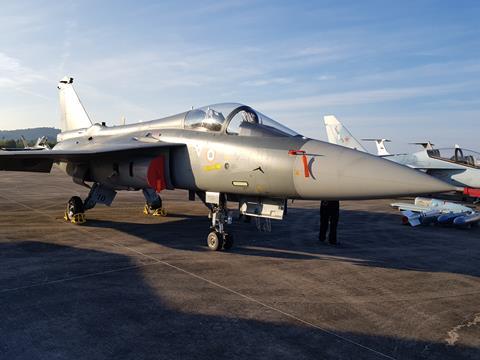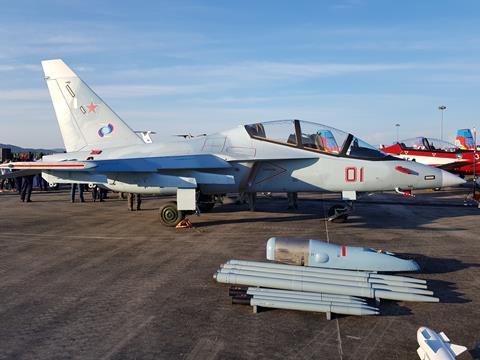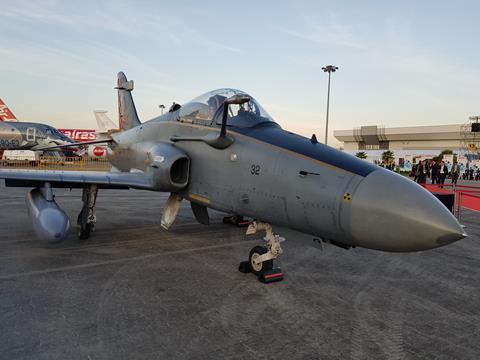Kuala Lumpur has kicked off its tender for 18 jets to fulfil its Lead In Trainer-Light Combat Aircraft, or FLIR-LCA, requirement.
In a brief statement on the government’s tender web site, it states that the due date for replies is 22 September 2021.

The LCA requirement was part of the air force’s Capability 55 plan issued in 2018, outlining its goal of reaching a desired force structure by 2055.
The LCA opportunity attracted some interest at the last instalment of the Langkawi International Maritime and Aerospace (LIMA) event in March 2019.
The event saw the Hindustan Aeronautics Tejas Mk 1 and Yakovlev Yak-130 make their debuts at the show.
The appearance of the Tejas was especially notable because it was the first time the type had appeared in a flying display outside India. The Yak-130 also appeared on both static and in the flying display.
The pair were part of an eclectic group apparently vying for the requirement, following a previous request for information to several manufacturers.
Other potential contenders included the Korea Aerospace Industries FA-50, Chengdu/Pakistan Aeronautical Complex JF-17, and Leonardo’s M-346.

The Tejas and JF-17, however, are full-fledged fighters, with two-seat variants only developed later in the two programmes.
BAE Systems, which supplied Malaysia’s fleet of Hawk 108 trainers and Hawk 208 attack jets, has also said that capability can be added to its aircraft through various upgrades.
Budget-strapped Malaysia has a long history of procrastinating about major defence acquisitions. For years it flirted with several aircraft to replace its now-retired Mikoyan MiG-29 fighters with 18 new combat aircraft, but this process came to nothing.
Nonetheless, Kuala Lumpur recently received a reminder that modern combat aircraft are a necessity in an increasingly challenging geopolitical environment.

On 1 June, 16 People’s Liberation Army Air Force Xian Y-20 and Ilyushin Il-76 strategic transports featured in an unprecedented sortie deep into the South China Sea region. The large formation flew southwards toward the coast of Borneo, approaching to within 60nm (111km) of Malaysian territory, where they were intercepted by Royal Malaysian Air Force Hawk 208s.
In an analysis about the event, Euan Graham of the International Institute of Strategic Studies offered a few possibilities for the mission. Beijing may have wanted to give Malaysia pause about exploiting new offshore oil resources in Kuala Lumpur’s Exclusive Economic Zone – defying international law, Beijing claims virtually the entire South China Sea.
He adds that Beijing may also have been conducting airlift training, and possibly probing Malaysia’s air defence capabilities.


























